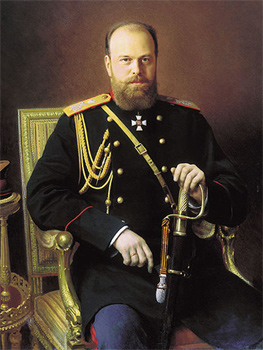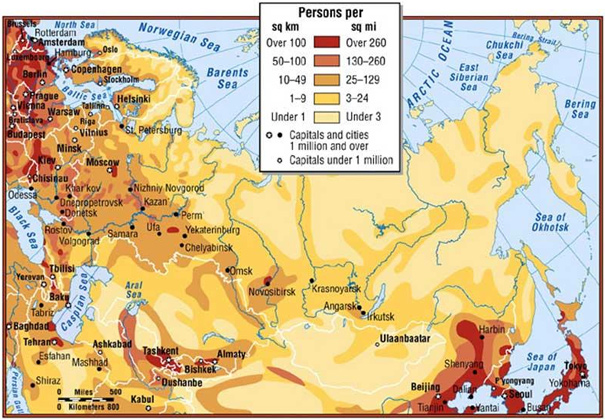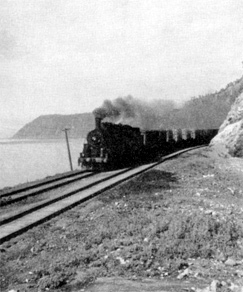
Source: Czar Alexander III, I.N. Kramskoi, Wikimedia
The Trans-Siberian Railroad transformed transportation in Russia. Before the railroad, travel time from Moscow (in the west) to Vladivostok (in the east) was nearly a year. With the arrival of the Trans-Siberian Railroad, that time was reduced dramatically. As hoped, efficient transportation unified Western Russia with its Eastern frontier, just as the Transcontinental Railroad had unified America.

Source: Czar Alexander III, I.N. Kramskoi, Wikimedia
Settlement did not tame the Siberian frontier to the extent it had tamed the American West. Many areas of Siberia remain sparsely populated. This can be attributed largely to the harsh climate-Siberia is infamous for its particularly cold temperatures.
Do you know how to read a population density map? Examine the map below to determine population density in Russia. Note where people are and are not living...you will need to remember this later!

Source: Population Map of Russia; Paul Roebuck
This is a population map of Russia that illustrates the densest population of Russia corresponds to the major cities along the Trans-Siberian Railroad. The Trans-Siberian Railroad project was a massive undertaking. The distance to be covered was more than 5,700 miles, and the tracks had to cross seven time zones.
Unlike the Transcontinental Railroad, the Trans-Siberian Railroad did not spark the construction of a great network of railroads. Absent in Siberia are the many north-south railways that branched off the Transcontinental Railroad. Perhaps this was because Russia lacked the funds to build these railways. In any case, much of Siberia remained a frontier, primarily as a result of the climate, but possibly because of the lack of an involved network of railroads as well.

Source: The Trans-Siberian Railroad in the Early twentieth Century, Kingsoft English-Chinese Online Dictionary
In the area along the Trans-Siberian Railroad, however, the population increased, and with it production also increased dramatically.

Source: Trans-Siberian Railway; Philatelic Database
Ten years after the completion of the line in 1904, nearly five million settlers, mainly peasant farmers, had taken the railway from European Russia to settle in Siberia
Thanks to updated farming techniques, farmers began producing grains and dairy products in southern Siberia; the railroad allowed transportation of these items. In addition, several coal-mining operations and iron and steel ventures were established. Siberia's rich natural resources were exploited and then shipped by railroad to western Russia or to the eastern port of Vladivostok, boosting the economy in the same manner as the Transcontinental Railroad had done in America. In fact, the Trans-Siberian Railroad still contributes significantly to Russia's economy, transporting approximately one third of all of Russia's exports.